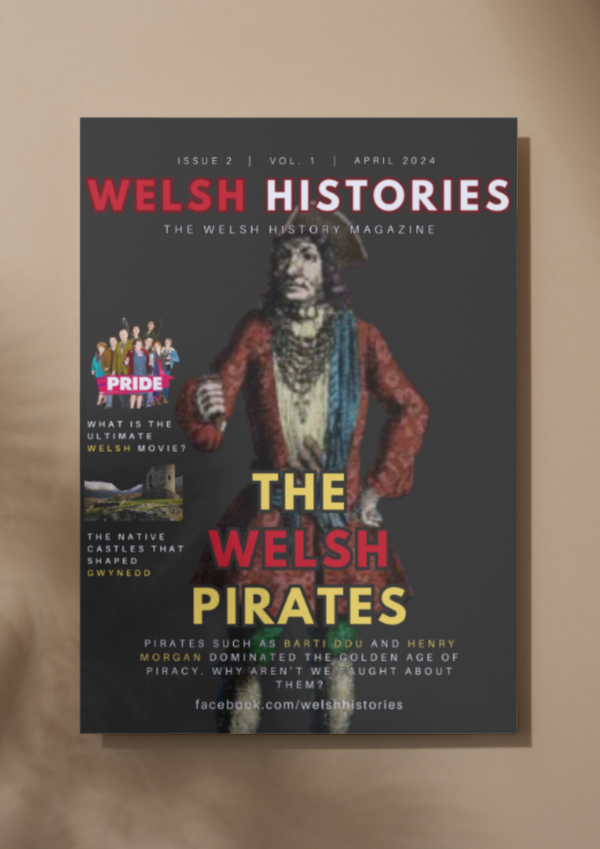Your basket is currently empty!
4 Welsh Artefacts That You Must Know About
Here are four fascinating Welsh artefacts that reveal the deeper layers of Welsh history.
1.
Did You Know that Clogyn Aur yr Wyddgrug (the Mold Cape) was discovered on this day (11 October) in 1833?

The ancient Britons of the Bronze Age created intricate jewellery, tools, and weapons which showcased their advanced metallurgical techniques. Archaeological finds, such as the famous Clogyn Aur yr Wyddgrug (Mold Cape, pictured) discovered in Yr Wyddgrug (English name: Mold), Cymru, provide fascinating insights into the craftsmanship and artistic skills of the ancient Welsh people.
Clogyn Aur yr Wyddgrug, a ceremonial cape dating back to the Early Bronze Age (around 1900–1600 BC), is one of the most remarkable examples of ancient Briton metalwork. It is intricately decorated with delicate gold detailing and was likely worn during ceremonial or religious occasions, demonstrating the advanced metallurgical knowledge of the ancient Briton society.
2.
There have been increasing calls for Welsh artefacts currently on display in English museums to be returned to Cymru.

One such artefact is the Goron Enlli, which would be used to crown the Brenin Enlli – King of Ynys Enlli (Bardsey Island in English).


The tradition of crowning a Brenin Enlli began in the 19th century, with the first being crowned in 1826. It had been the hope of Love Pritchard (pictured), a Brenin Enlli, for the crown to go on display at Amgueddfa Genedlaethol Caerdydd (National Museum Cardiff) but, instead, the crown was sold to the Merseyside Maritime Museum, in Liverpool.
This particular artefact is now on display in Bangor, Gwynedd. A positive example of how the return of Welsh artefacts can be achieved.
Welsh Histories supports the campaign for Welsh artefacts to be on display in Welsh Museums.
3.
Tarian Rhos Rydd (English: Rhos-Rydd Shield) was discovered in a marsh near Rhyd-y-gors, Ceredigion, in the early 19th century (with official estimates as to when it was discovered uncertain). However, what is certain is that it was donated to the British Museum (where it remains) by Sir Augustus Wollaston Franks in 1873.

Tarian Rhos Rydd is a large, Bronze Age copper-alloy shield which dates to sometime between 1300 and 800 BC. At 667 mm across (and being 0.7 mm thick with a weight of 1929 grams), it is a significant Welsh artefact.
Should it be returned to Cymru and be put on display here? Share your thoughts!
4.
One of the most significant archaeological finds in Cymru came all the way back in 1869 when a Welsh farmer near Dolbenmaen, Gwynedd, discovered Lunula Llanllyfni in a bog at Llecheiddior-uchaf farm.

Lunula Llanllyfni is made from solid gold (believed to be Welsh gold) and weighs in at 185.4g (6.5 ounces), whilst measuring at 24cm (9.5 inches) in diameter. Its weight means that Lunula Llanllyfni is the heaviest lunula discovered on either the island of Great Britain and the island of Ireland.
Of course, such as with other Welsh artefacts (namely the Mold Cape, which I have covered previously), the lunula was purchased by the British Museum, where it is now on display.
Shop new arrivals
-
(UK ONLY) YEARLY Subscription Welsh Histories Magazine
£79.99 -
(US & CAN ONLY) YEARLY Subscription Welsh Histories Magazine
£129.99 -
DIGITAL COPY Welsh Histories Magazine – April 2024
Original price was: £2.99.£1.99Current price is: £1.99. -
DIGITAL COPY Welsh Histories Magazine – August 2024
£3.99 -
DIGITAL COPY Welsh Histories Magazine – December 2024
£6.99
More from Welsh Histories
Welsh Histories is a Welsh history celebrating platform which looks to promote all aspects of Welsh history. Though we focus predominantly on native Welsh history, we do also share the non-native aspects from time to time. You can follow us on Facebook; Instagram or Twitter for more. A reader? We also have our very own Welsh Histories Shop where we sell our Welsh Histories Magazine. Diolch yn fawr iawn and keep enjoying Welsh Histories.
Sally is a proud wife of a Welshman, editor & writer of Welsh Histories. She’s all about stories—that shout ‘anything Welsh.’ Drop her an email if you have an advice, insight, experience, or a story to share.




